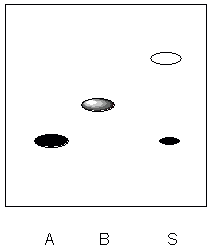
General Announcement (Please read!)
1. It has come to my attention that some students are not clear about certain policies in this course. There is no such policy in this lab course which discourages students from asking questions. The reason why you are here is to learn. This should also result in questions from the the student's side, which are welcome by the teaching assistants and the instructor. However, it is expected that the student comes prepared to the lab section in order to be able to complete the experiment in a timely fashion. The majority of the questions regarding the experiment (theory and practical issues) can be answered during lecture and office hours. A question generally should demonstrate the student's ability to analyze the problem and be as specific as possible in his/her inquiry.
2. In the future, please do not study outside my office (YH3077E). My colleagues in the office suite try to get some work done, and the noise outside is rather disturbing.
3. Finally, spectrum #4 in the IR assignment was acquired in Nujol. Its spectrum looks very similar to the Example #1 in the IR chapter in your Survival Kit Reader.
ATTN: answers to the below questions are due at the start of your lab period; these answers should be part of your pre-lab write-up.
1. Referring to the reaction carried out in the lab, answer the following questions. Show pertinent equations where appropriate.
a. A student uses 95% ethanol as a solvent in the reaction. What would he observe?
b. The procedure asks to reflux the mixture before adding the KOH solution. Explain briefly why.
c. Why is it important that both ketones are dissolved before the KOH solution is added?
d. How does the experimenter know that the reaction is progressing?
e. Which solvent is used for recrystallization in this reaction? Rationalize the choice.
2. A student has 0.42 g of a crude product X. If the solubility of X is 70 mg/10 mL at 80 oC, 50 mg/10 mL at 50 oC, 40 mg/10 mL at 30 oC, 30 mg/10 mL at 20 oC and 10 mg/10 mL at 0 oC, how many grams of the product would he recover if he conducts the recrystallization properly?
3. While running the following reaction
A + B --> C + D
a student acquires a TLC for his reaction mixture using a plate coated with silica and a mixture of dichloromethane and hexane (1:2) as eluent. He observes the following result

Note: Compound D is not UV-active.
a. Determine the Rf-values for the two spots in the sample lane and assign them to the compounds.
b. What can be said about the progress of the reaction?
c. His neighbor decides to use a solvent mixture dichloromethane and hexane (2:1) as eluent. What would change?
d. What is used to apply the sample to the TLC plate? Explain briefly.
e. Assuming the TLC is obtained for the reaction carried out in the lab, assign the spots to the compounds. Which compound is "D"?